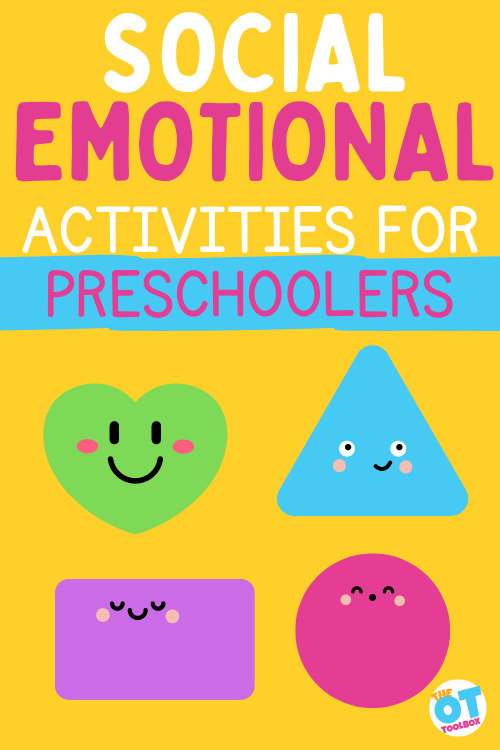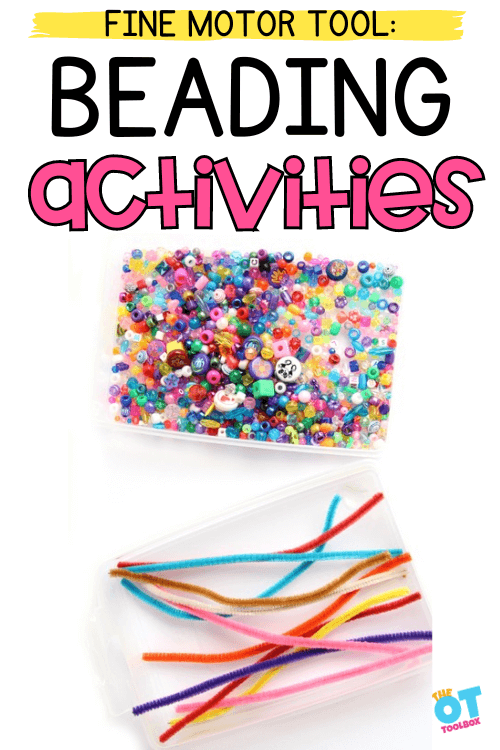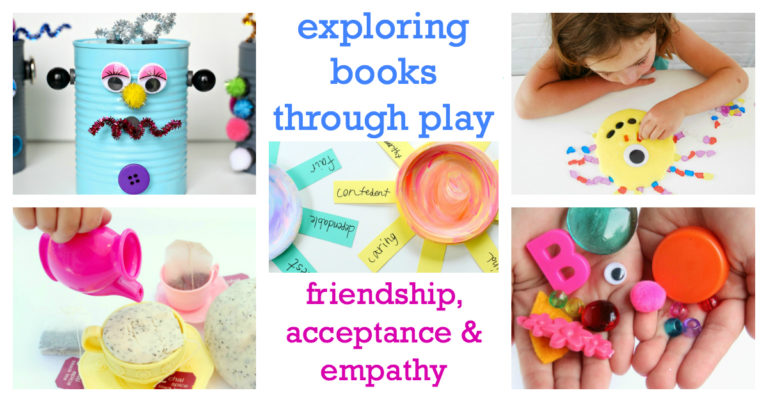In today’s blog post, we’re talking all about social emotional activities for preschoolers…and for good reason! Emotional skills have become one of the most discussed milestone checklists as children learn how to respond to their feelings at home and at school. Having a set of emotion activities preschoolers love is a key component to developing awareness about feelings and empathy during the preschool years. Another great resource is our stages of empathy development.

Social Emotional Activities for Preschoolers
When a child experiences a BIG feeling, they don’t always have the words to express those feelings with others, sometimes resulting in a tantrum.
There are many reasons that children become frustrated, including wanting attention, being annoyed with peers, and the desire to do something they are unable to do (just to name a few.) We’ve talk before about self regulation in preschoolers, and how to foster regulation needs, however, it’s worth breaking down the social emotional component into further detail.
As children learn how to communicate with both gestures and words, tantrums tend to dissipate and children start to learn about collaboration, discussions and compromise. In this blog, we will discuss how to support children’s emotions during the toddler and preschool years.
Have you heard of the “terrible twos” or the “threenager?” These words are commonly used for young children as adults discover that they show their feelings with their body (not necessarily with words.) As they grow into four and five year olds, they learn more language and negotiating skills. But what about when they are two and three?
In order for a child to understand what they are feeling and how to communicate those feelings in a productive way, they must first learn the words to express those feelings.
According to this article, “A typical 2-year-old can say about 50 words and speak in two- and three-word sentences. By age 3, their vocabulary increases to about 1,000 words, and they’re speaking in three- and four-word sentences.”
Dr. Robert Plutchnick, psychologist, discovered over 25000 emotions in his famous emotions wheel. As children become more aware of their feelings and gain new ways to communicate them, their response to frustration improves.
Why Use Play to Foster social emotional skills in preschoolers?
All children learn the best through play, and that includes learning social and emotional skills.
Whether learning at home or at school, preschoolers respond best to positive reinforcement and consistency. Using meaningful and motivating books, games, and toys, as well as social emotional play opportunities support preschool-aged children in developing these essential skills.
Through play, preschoolers learn to use their sensory systems to calm down when they are feeling overwhelmed. They learn the words to communicate their feelings.
One of my favorite parts of using social emotional play activities is they also foster problem solving and confidence. When children learn how to problem solve, they can use what they learn in the future if they start to become frustrated about the same situation again.
As children start learning more about their feelings, and their emotions, their social skills start to blossom. This social skills checklist is an amazing resource that describes, in detail, the following social skills that children learn in their preschool years:
- Conversational Skills
- Interpersonal Skills
- Emotional Skills
- Social Play
- Emotional Development
- Emotional Regulation
- Peer Interactions
- Self-Awareness Skills
- Self-Confidence
When in the classroom, it is important that we give children ample opportunities to practice emotional skills through large group, small group and free play activities.
Every child learns new skills differently, and when we use multisensory emotion activities to teach emotional concepts to preschoolers toddlers and preschoolers are able to remember these skills quickly.
One tool that can support preschoolers (and those of all ages, as well) are social stories to support social and emotional considerations in any given task.
preschool Social Emotional Activities
If children have the opportunity to play with emotions and talk about feelings on a daily basis, they are able to respond to their feelings much easier when they are feeling upset or overwhelmed.
Here are my 5 favorite playful activities to teach social and emotional skills to preschoolers:
- Feelings FREEZE-
Kids LOVE to move. What better way to teach them new emotion words then with a “FREEZE” game? Turn on some music and have kids dance or run around. When you pause the music, say an emotion and the kids must freeze and make the face that goes along with that emotion. You can expand this game into beginning reading activities by writing the feeling on a piece of paper and holding it up (for older children.)
2. Paper Plate Emotions Faces-
You can use items like paper plates, cupcake liners, or even pieces of construction paper to pretend and identify with emotions. Emotion faces are a wonderful activity for preschool circle time or small group time. You can make them as elaborate as you like or you can keep it simple by having the children draw their own faces! These feeling faces can be used as part of a pretend play scenario in the future. These pumpkin emotion faces are one idea. Or, you can use this emotion faces worksheet for older children.
- Chalk Emotions-
I love bringing in sensory components to all lessons I teach in preschool, and water and chalk is one of my favorite was to do so. Chalk activities are just one of those fun and creative ways to learn through play. For this activity, draw some feeling faces on the concrete with chalk. Fill up a bucket of water and add some paint brushes to the water. Have children trace t he chalk faces with the wet paint brushes and watch the faces “disappear!” This is a fun way for children to name the emotion while making that emotion “disappear.” Extend this activity with children by asking them what they can do when they feel the way the chalk face does.
- Fine Motor Emotion Eggs-
Fine motor strengthening is incorporated into this super fun plastic egg activity where the top part and bottom part of faces can be mixed and matched. As children pull apart and put together the eggs, have them name the feeling they “made.” To expand on this, ask them what recently made them feel that way and what did they do to feel better. The more conversations we have about how to respond to feelings, the more likely children will remember what to do when they feel that way.
5. Using Your Voice (Puppet Shows): When children are learning how respond to other children’s behaviors, a lot of times they result to hitting, grabbing, or other means of communication. Creating a puppet show area of the classroom, to do as a center time or even during large group time, can encourage children test out different social situations and practice (with puppets) how to respond. Including a teacher puppet show during large group is often a great way to model these “shows” and encourage children to come up with their own (such as what to do when you want a toy.)
5. Friendship Activities: Preparing some small and large group activities that highlight friendships, such as books, art activities, and more, can support children in understanding why creating friendships at school is important. You can find lots of friendship activity ideas in our blog.
6. Story time-There are many preschool book activities that describe feelings in a fun way for preschoolers. The following list of books are developmentally appropriate for young children and are great ways to talk about different feelings throughout the day.
- F Is for Feelings by Goldie Millar
- Feelings to Share from A to Z by Todd Snow
- Llama Llama Mad at Mama by Anna Dewdney
- Lots of Feelings by Shelley Rotner
- My Many Colored Days by Dr. Seuss
- The Great Big Book of Feelings by Mary Hoffman
- Today I Feel Silly, & Other MOODS That Make My Day by Jamie Lee Curtis
Emotional development is an important skill that preschoolers learn through experiences. With ample opportunities to practice and the right supports, children will learn how to manage their feelings in a positive way.
When emotion activities are included regularly throughout a child’s day, discussing and talking about how they feel and how others feel becomes familiar and natural. When they have the words and the practice to communicate feelings and emotions with adults and peers, they will be able to use these skills when they are overwhelmed.
Exploring Books Through Play is a digital, e-book designed to foster social emotional skills like friendship, acceptance, and empathy with play activities. Grab your copy today.
7. Use any of the activities above along with a feelings check in activity. This can be a great way to start the process of understanding emotions and how to support needs for regulation.
pre-k social emotional activities
Early childhood educators need to consider the social and emotional development of young children in the preschool or pre-K environment. These developmental skills drastically impact learning and skill achievement in the classroom setting.
When in the classroom, typical developmental milestones are considered and lesson plans are based around child developmental stages. However, being able to manage emotions and feelings with minimal supports and redirection empowers children.
As they start attending preschool, all of the classroom and peer situations may be new. They are now around friends who are also delayed in social and emotional learning. A large focus of curriculum has shifted from pre-academic to a strong social/emotional foundation, in order to support our most youngest learners in self-care, self-soothing, turn taking, and basic play skills with peers.
In addition to the social and emotional activities for preschoolers listed above, some more advanced ideas can be used including:
Group Discussions Lead by Children: One of my favorite ways to support children listening to each other and taking turns, is to incorporate group discussions within circle time. This could be in a question/answer format, or in a story creation activity. To create a story with your preschoolers, the teacher would start by saying “Once upon a time there was a ______.)” Then the child to the right of the teacher would say the next sentence. The child to the right of that would continue the story with the next sentence, and so on! Once it gets back to the teacher, the story is completed. Not only is this a great activity for literacy and language development, but every child is listening to each other to find out what happens next.
Calm Down Corner: Visual and tactile supports help people of all ages, but it is essential to have a visual space in the classroom for preschoolers to retreat to when they need time to calm down. A calm down corner makes creating this area simple and makes it a positive experience for children. A variety of self-led choices can be made in the classroom space, with items that help children calm down using their sensory system. As they calm down, they can use the visuals included in the kit to explain to other children and adults how they are feeling and what they need support with.
Classroom Jobs: When children take care of the classroom environment together, they take responsibility and care about the classroom and what is inside. As a team, children learn to work together to keep their classroom and the children in the class safe and functioning.
Classroom Safety Rule Creation: Having rules that every child understands and acknowledges allows children to be reminded of and help other children remember basic rules throughout the school day. Always phrase your rules in the “do” instead of the “don’t.” For example “Use Walking Feed” instead of “Don’t Run.” This tells children what they should be doing.
Block Creations: Have you noticed that a lot of the daily frustrations occur in the block area, where children are all wanting to use the same blocks (whether that be Magnatiles, large wooden blocks or the cars?) When children are supported in sharing space and materials in a highly sought after area, they are able to generalize those skills into other areas of the classroom. In the morning, have children work together to create a block creation that they are all a part of. That could be building their town, a local zoo, the space station, etc. Block play supports collaborative play in one of the most creative ways.
Some more resources for social and emotional learning:
If you are looking for more ideas, we’ve covered social emotional toys and even books to support emotional development because these skills are something that every child learns through play and interacting with others.

Jeana Kinne is a veteran preschool teacher and director. She has over 20 years of experience in the Early Childhood Education field. Her Bachelors Degree is in Child Development and her Masters Degree is in Early Childhood Education. She has spent over 10 years as a coach, working with Parents and Preschool Teachers, and another 10 years working with infants and toddlers with special needs. She is also the author of the “Sammy the Golden Dog” series, teaching children important skills through play.







